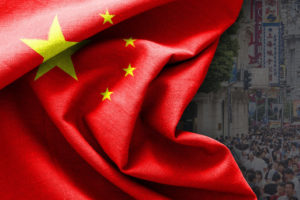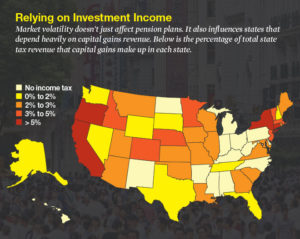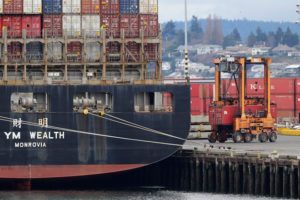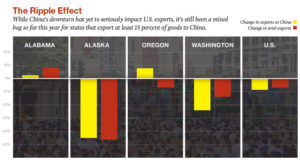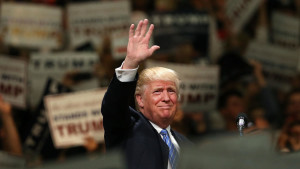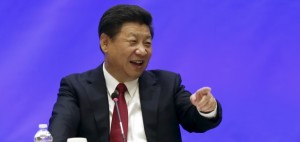Considero que el sistema democrático norteamericano esta diseñado (y es la matriz) para favorecer a las grandes corporaciones y financieras sin importar el bienestar de las clases trabajadoras.
Las relaciones de trabajo han cambiado demasiado desde la revolución tecnológica y digital en los últimos veinte años.
La aspiración a vivir el sueño americano se vuelve cada vez más dificil conforme avanza el tiempo, en tanto la riqueza y el poder se concentra más y más en pocas manos, agrandándose la brecha entre ricos y pobres, siendo la clase media un estrato que se incorpora más a este último sector socioeconómico.
Como paliativo, es necesario contar con leyes laborales mas abiertas que tomen en cuenta los derechos de todo trabajador, sin embargo, ello depende de la legislación que Estados Unidos apruebe tanto a nivel del Poder Legislativo o con iniciativas del Ejecutivo.
El problema es que en los últimos años, quien tenga ingentes recursos para financiar campañas políticas generalmente tendrá a su disposición el poder político que les ayudará a que sigan manteniendo su riqueza.
Así las cosas, es obvia la existencia de un círculo vicioso que tiene como protagonistas a unos pocos que poseen riqueza y que financian a quienes se encuentran en el poder para que éstos, a su vez, aseguren la riqueza de los primeros con normativas, políticas o legislación que les permita perpetuamente mantener su riqueza, siendo la población un factor accesorio que debe ser controlado y distraído para dedicare a trabajar toda su vida.
Así, contar con trabajadores en constante competencia interna (entre trabajadores de una misma compañía) y externa (entre trabajadores de los Estados Unidos y otros mas “baratos” en países como China, Bangladesh, Pakistán, Camboya, etc), en situación de inestablidad laboral con un salario mínimo por hora; facilita un enorme control a traves del temor y el miedo, a perder su unica fuente de sustento, mas aun si se tiene hijos u otros dependientes.
La población no pone mucha atencion en estos detalles porque el poder los entretiene y los aleja de la realidad a través de distintos medios. Este abuso al trabajador debe ser erradicado y el modelo norteamericano reformado para una justa relacion entre riqueza y poder.
Un detalle en USA es que debemos diferenciar entre trabajadores con educación superior y quienes no la tuvieron. Generalmente los primeros estan en una mejor situación que estos ultimos (Low-paid shift workers). Es verdad que no hay derechos laborales amplios en este país, solo los básicos referidos a jornada laboral, derecho de sindicación (union), seguro médico, etc., y otros que no se encuentran reconocidos o desarrollados por completo, como por ejemplo: licencia por maternidad, paternidad, vacaciones de un mes, licencias remuneradas, etc..). Si fallas en cualquiera de ellos simplemente te botan de trabajo, porque habrá otra persona detrás tuyo con ganas de trabajar y ser explotado por necesidad.
El sistema norteamericano es muy deshumanizado e individualista al máximo. Si para los trabajadores manuales y obreros nacionales y residentes legales es injusto, es posible imaginar el también el tipo de desigualdad tan grande que se genera cuando se hablamos de trabajadores ilegales en este país. Una de sus consecuencias es el uso de los trabajadores, exigiéndoles más en nombre de las ganancias de las empresas para finalmente quemarlos y darles de baja con un cuerpo cansado y enfermo (tanto física como psicológicamente). Como leí una vez, al final de tu vida mirarás hacia atras y pensarás: “mi vida se resumió en trabajar y trabajar, sin parar para otros y no pude gozar a mi familia”. Triste pero cierto.
En mi opinión, no importa quien salga electo presidente de los Estados Unidos, sea demócrata o republicano, el sistema norteamericano está diseñado para mantener en el poder a una élite a perpetuidad. Los políticos y personas que deciden el destino de un país, le deben pleitesía a un grupo de billonarios que los financian, son en suma sus espantapájaros o títeres según como deseen utilizarles.
Estados Unidos dejó de ser el paraíso que muchos idealizaron. Considero que si un migrante quiere buscar un mejor futuro, solo le beneficiará venir a los Estados Unidos para recolectar o juntar dinero y enviarlo a su familia o retornar a su país después de un tiempo, asi como las mismas corporaciones y entidades financieras hacen con sus inversiones en todo el mundo (a modo de capitales golondrinos).

Hillary Clinton fue a trabajar enferma, el día en que se conmemoraba el aniversario de los ataques de las Torres Gemelas en Nueva York.
Hillary Clinton no es la única estadounidense que esta semana fue a trabajar pese a estar enferma.
Al presentarse el domingo en la ceremonia de conmemoración de los atentados del 11-S tras haberle sido diagnosticada una neumonía, la candidata presidencial demócrata hacía lo mismo que millones en su país cada día: ignorar sus síntomas y tratar de sobrellevar un día de trabajo.
“A nadie se le permite estar enfermo. La enfermedad es vista como una debilidad”, dice Leanne DeRigne, profesora de trabajo social en la Universidad Florida Atlantic.
“Hay una actitud de decir ‘soy insustituible, si no me presento, mi trabajo no se hará’. Parte del problema es también la preocupación por la forma en que las personas van a ser juzgadas como empleadas: si son personas confiables o no. A quienes le preocupa que al tomarse demasiados días por enfermedad, acumular demasiadas ausencias, ya no sean consideradas como fiables”.
Y añade: “En el núcleo mismo de la identidad de los estadounidenses está la idea de ser un trabajador abnegado”.
Sin alternativa
No es que la mayoría de los estadounidenses puedan escoger.

Imagen en BBC
Estados Unidos es el único país industrial desarrollado que no garantiza por ley la licencia pagada por enfermedad a todos sus trabajadores.

Hillary Clinton regresó al trabajo este jueves.
En virtud de la Ley de Ausencia Familiar y Médica, a ciertos trabajadores se les permite tomar hasta 12 semanas de descanso por enfermedad o por haber tenido un hijo. La norma fue promulgada por Bill Clinton en 1993.
Muchas compañías ofrecen a su personal unos cuantos días de licencia por enfermedad como parte de su paquete de beneficios.
Pero para millones de trabajadores con salarios bajos, la regla es simple: si usted no se presenta a trabajar, va a perder un día de salario.
Amenazados
Casi un cuarta parte de los adultos estadounidenses han sido despedidos o amenazados con ser despedidos por tomarse días para recuperarse de una enfermedad o para cuidar a un ser querido enfermo, según afirma Family Values at Work (Valores Familiares en el Trabajo), una ONG que hace campaña por el derecho a licencias remuneradas para los trabajadores.
Este clima es particularmente difícil para las mujeres que siguen enfrentando la responsabilidad principal de cuidar a niños pequeños y familiares ancianos, dice Leanne DeRigne.

En Europa y otras regiones, los empleados tienen derechos mucho más amplios en cuanto a las licencias por enfermedad.
Sus investigaciones sugieren que algunas familias pueden estar gastando más en tratamientos médicos debido a que están retrasándolo ante las dificultades de ausentarse de su lugar de trabajo.
Esta situación también puede tener graves consecuencias para la salud pública.
En febrero, la cadena de comida rápida mexicana Chipotle le echó en parte la culpa de un brote de norovirus en 2015 a algunos empleados que habían ido a trabajar enfermos a sucursales en Boston y Simi Valley, California.
La compañía, que emplea a 50.000 personas en EE.UU., ahora requiere que los empleados se tomen una licencia remunerada en sus casas por cinco días luego de que sus síntomas hayan desaparecido.
Acuerdo tácito
Pero incluso cuando tienen derecho a licencia por enfermedad, muchos estadounidenses no la toman.
Más de una cuarta parte de los trabajadores encuestados en 2014 por la agencia de salud pública NSF dijeron que siempre van a trabajar cuando están enfermos.

La cadena de restaurantes Chipotle dijo que un brote de norovirus se presentó en sus instalaciones, entre otras razones, porque algunos empleados fueron a trabajar enfermos.
La cultura de los sitios de trabajo estadounidenses, caracterizada por largas horas de jornada laboral, no es el sitio adecuado para correr el riesgo de ser etiquetado como “vago”.
“En cualquier empresa distinta al sector público, cuando usted dice que tiene una jornada de “nueve a cinco”, en realidad se espera que trabaje de ocho a siete, al menos en la ciudad de Washington y particularmente en Nueva York”, asegura Nicholas Scheeberger, de 30 años de edad, ejecutivo de ventas de tecnología basado en la capital estadounidense.
“Es como un acuerdo tácito. Su jefe no le va a decir que necesita quedarse y trabajar más, pero si usted es la persona que llega a las nueve y se va a su casa a las cinco todos los días, es probable que no vaya a durar mucho en ese puesto”.
Por la resaca
Scheeberger dice que no le molestaba la falta de licencias pagadas cuando trabajaba como camarero, un empleo en el que las propinas formaban la mayoría de sus ingresos.
Ahora que tiene un trabajo de oficina, tiene dos semanas de vacaciones y “siete a 10 días de enfermedad”, pero hay presión por no utilizar ese derecho.
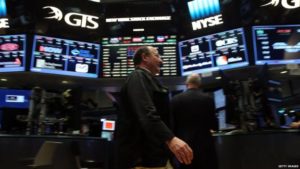
La cultura laboral estadounidense no mira con buenos ojos que los empleados se tomen días por enfermedad.
“No me malinterpreten, hay un montón de personas que piden licencia cuando en realidad están con resaca, pero hay más que eso. Incluso si uno está enfermo y hay algo importante pendiente, es absolutamente necesario estar en el trabajo”.
Si hay una reunión con un cliente grande o un seminario, añade, “a menos que usted esté moribundo, lo más probable es que va a ir a trabajar”.
Leyes
Las encuestas sugieren que el público estadounidense está fuertemente a favor de la licencia por enfermedad, pero el progreso hacia ella ha sido lento.
Algunos estados, como California y Nueva York, han aprobado sus propias leyes. Como resultado, se estima que 11,3 millones de trabajadores estadounidenses ahora tienen derecho a algún tipo de licencia pagada.

Obama no tuvo suerte en sus intentos por establecer la licencia no remunerada.
Hillary Clinton se ha comprometido a consagrar una licencia familiar remunerada de 12 semanas por enfermedad si gana la elección presidencial. Donald Trump no se ha pronunciado sobre el tema, a pesar de que ha respaldado el permiso pagado por maternidad.
Los intentos del gobierno de Barack Obama por establecer la licencia remunerada se encontraron con una fuerte oposición en el Congreso, dominado por el Partido Republicano.
Los republicanos argumentaron que podría afectar a las pequeñas empresas y dar lugar a la pérdida de empleos, y se burlaron de la idea de que Estados Unidos podría aprender lecciones de las naciones europeas en ese aspecto.
En: BBC
Puede leer además: Present at work yet far from in good health









